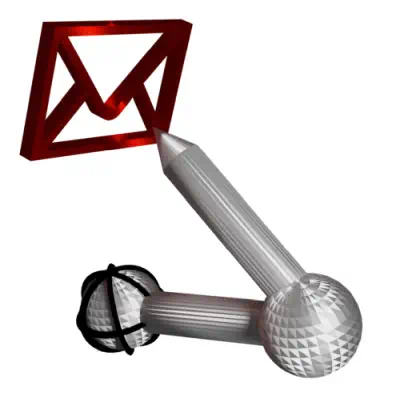AyMINE – Technical documentation
Modules
Integration with ERP Abra Gen
 Task, project & quality management
Task, project & quality management
Manager approval with the task report
Why some data can't be deleted
GDPR and record of qualifications
Qualification of user or contact
Right to Manage Qualifications
Adminitration of areas, projects, calendars
Failure Analysis for an Individual Property of a Component or Process
FMEA – Probability of Detection
FMEA – Probability of Occurrence
 Task, project & quality management
Task, project & quality management
Administration of the Task Management Module
System rights for the task management module
Improvements and Preventive Measures
Methodology and Quality Management systems
What makes up the methodology / SMJ
Problems, tickets and their management
Collaborative Resolution of Multiple Problems
Customer Service Response Generation
Incident and Quality Issue Management
Objects affected by the problem
Problems, Incidents, Helpdesk Tickets
Return project plan by baseline
Sample tasks and methodologies of the area
Effect of the task on the right to modify the attached object
The person responsible for the task
Working procedure – task definition
Management of responsibilities - RACI Matrix
Objects related to the task pattern
 Contacts and directories module (CRM)
Contacts and directories module (CRM)
Address book list and management
Directory or people and companies
Order overview for customer groups
 Contacts and directories module (CRM)
Contacts and directories module (CRM)
System Permissions and CRM Module Settings
Send bulk messages in compliance with GDPR
How to correctly forget a person's details
Unsubscribe and set preferences
for bulk mail
 Web management and automation
Web management and automation
Receiving a message from the web
Human resources
Personalistics – User Permissions and roles
Human Resources module security
Manage department / division data
Overview of Personnel Information for pracov# Employment Contract
Synchronizing staff and system users
 Products, assets and sales
Products, assets and sales
Creating and processing orders
Manage the Property & Business module
Why are the Quality criteria usefull
Managing Finance
Metrics and Measurements
Work summaries from generated data
Technical Modules
Sabre plugin module
Enterprise Architect connector
Database link to Enterprise Architect database
Enterprise Architect connector
System Modules
 The AyMINE Framework Module
The AyMINE Framework Module
AyMINE — Tips for Mobile Usage
Configure how your system looks and works
Gestures and Keyboard Shortcuts
More about how the system works
Private notes and tags for objects
Overview of Modules and Record Types
 Products
Products 
Products are a general description of a certain type of asset. The definition may sound complicated, but the product is exactly the same as the general use of the term.
Elsewhere?
If you are looking for information on quality criteria and product features, this page is dedicated to them
Conversion of product volumes and units is dedicated to this page.
What are products
Examples of products are refrigerators, mortgages, a CNC program to cut out a cabinet, a car, a Skoda, Octavia, a text editor, MS Word, a gear wheel 25mm in diameter with 50 teeth, etc.
The product can also be work, e.g. changing the wheels, repairing the fender, baking a cake, a German lesson for employees, etc.
What they are for in the system and how they are broken down
Products are used to determine what assets are present in a company. For example, if a company has programs for NC machines for various products, each of them is an asset. In order to better classify them according to their common characteristics, they are broken down into products.
In principle, products of 3 categories are distinguished:
Purchased_ are products that a company acquires to use or consumes to produce its own products. Typically, they are inventories, consumer goods, investment purchases as well as procured services.
Produced are products that are produced in a company. Typically sold products, semi-finished products (including those that are further consumed in downstream production), internal calculated works and provided services
Traded are products procured for resale. Typically, they are products supplied for stock for resale.
The determination of products is, of course, always fully dependent on the company – what one uses, the other produces.
Product hierarchy
Products can be many in a company, and for better organization, they can be broken down hierarchically from a more general description to a more detailed description.
Examples of a hierarchy are the above examples auto > damage > Octavia. Keeping products in a hierarchical organization brings the possibility of order and better description. Detail depends on the number of products that are registered.
An important importance of a hierarchy is in relation to the categorization of suppliers. If you have a supplier that supplies a whole group of products, it is advisable to have this group together. You can then easily for the whole group save information about the supplier
Another possibility of organizing products are categories. Each product belongs to a category and with their help further subdivision is possible. The above mentioned car product may belong to the category of the company fleet.
Note: The product hierarchy is promoted when the status changes. If you change the state of a product, the states of all its specific variants will change. Products that do not have a state in common are unlikely to form a hierarchy expressing the relationship between the generic product and its specific variant. Consider whether there should be a breakdown across product categories in that case.
Product states
Product state is important information describing whether a product can be used. Therefore, pay attention to product status. Read more about product statuses here.
Composition of the product
Within the product it is possible to register its composition, i.e. what products and in what quantity are needed for its creation. Of course, the composition of the product makes sense to break down only in the case of manufactured products. The description of the composition of the product allows to calculate the price of the final product, the case of the order, and to check whether the product can be manufactured e.g. from stock.